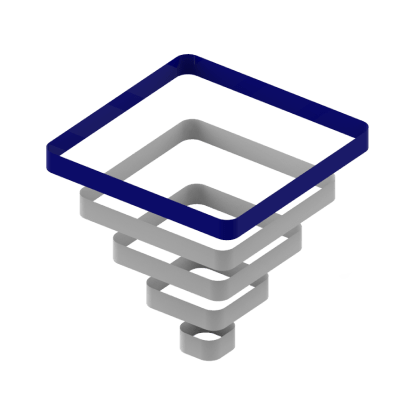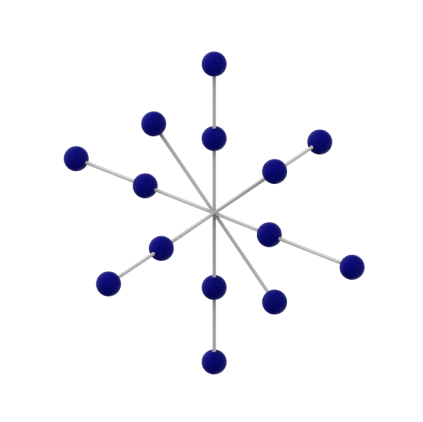Régis Hamelin: Jacob Decker, thank you for accepting this invitation. Before we get into some technical discussion, let’s talk about you. Could you explain what is your job today at FESTO ?
Jacob Decker: Thank you for having me. My official title at the moment is “Project lead for AI and innovation”. I was responsible for these topics in our factory plant in Scharnhausen technology plant. My responsibility was to build up a team to do innovation management for this brand new plant. We wanted to have not only a state-of-the-art plant but also bring disruptive production technology and external partners to always have the latest methods and technology to optimise our administrative and operational processes. It started 6 years ago.
Since AI is part of these disruptive technologies, became part of my daily work. We started to work and try AI on our machines, and since last year I became project lead in AI, not only for our own need but also applying the knowledge we acquired towards external customers.
Régis Hamelin: When you started with AI, what were he difficulties you have encountered
Jacob Decker: The first requirement in order to start with AI is to maximize what you can obtain with all the traditional methods. If you have a machine which top error is that you have missing material, operating errors or missing personal, it doesn’t make sense to start using AI. At FESTO we have a great operational excellence team which makes sure we use all the appropriate methods to maximise the operational efficiencies. I would recommend to reach a certain level of excellence before starting with AI.
The next issue was to identify and prioritise the right machines. At the beginning you need to build the whole network Architecture in order to have access to the right data and analyse at the edge or on prem or in the cloud. When you have data you need to find the right methodology and technology to analyse the date. There are multiple methods purely data driven or also very focussed on specific components. This is what we tried, learned and even failed at the beginning. We this knowledge we have been able to apply and develop our own software solutions.
Question from the audience: how do you identify the technologies you need ?
Jacob Decker: In the innovation management we involved the people. This is a long process because our main goal was to change the culture a bit, to have an open mind. We did that including external partners, outside in… We had to acknowledge that we are not necessarily the best in everything. Some companies are much better than we are in some fields. Especially working with start-ups was a challenge. They have different methods and of course different speed.
We started to look for pain points in the production. I asked my colleagues what were those pain points and identified the start ups which could solve these pain points with the aim to build a very fast functional prototype to measure the value. At least of an idea.
We also had a vision of where we wanted the factory to be in 5 years. So with these 2 visions, bottom- up and top-down, we were able to define our roadmaps. Every year we work on 10 different technology focusses : cybersecurity, AI, horizontal and vertical connection, autonomous robotics and so on… and for each of these technologies we define projects that we want to achieve in this specific year.
Régis Hamelin: When you started the first experience what were the disappointments
Jacob Decker: The machine that we purchase, some of them are 2 years old, others are 20 years old. When we started we selected a 2 years old machine. There are a lot of data produced in these machines, recipes, on how to produce certain components, but the data was not structured and provided in a way that it could be used for data analytics. The first disappointment was that for our first project, 80 to 90% of the work was to clean and prepare data for analysis. We put effort in organising the data, we also figured out that the data was collected in the wrong way, we had to re-program the plc or at least the data gathering. This was a huge disappointment. We spent 8 months only to make sure that we collected the data and make sure it was correct.
The first project was with a research facility and we wanted to perform predictive quality, and we wanted to finish the product in 1 year. We could assess the value of AI with the data we have produced, but we couldn’t do it in a live system due to poor data quality. The machine was simply not designed for AI.
Régis Hamelin: What is the most important expertise required to implement an AI project
Jacob Decker: A deep understanding of the machine process is probably the most important to start with. There are a lot of very good data scientist. It is not necessary that everyone becomes a data scientist. Knowing the pain points in the production. The important processes and important machines, as well as the cost related to the process (quality , maintenance). Knowing this is the most important step.
Régis Hamelin: FESTO is well known for components, but a bit less for Software, can you explain what is FESTO’s offer in AI ?
Jacob Decker: We try to bring an additional value for our customers. We are famous for our innovative industrial automation products, we offer additional value with hardware independent software. It covers many areas from the additional information into a developing process until the transparency for maintenance, until very new products with AIon the edge or AI solutions for predictive quality, energy or maintenance.
Régis Hamelin: Does FESTO you provide integration service ?
Jacob Decker: There are a lot of very good data scientist and the Google or AWS are part of this ecosystem. What we bring to our customers is the deep knowledge of the automation and factory processes. Just collecting data throwing AI on it and hoping for the best is not enough. This requires a lot of domain knowledge.
Régis Hamelin: What is the level of AI readiness of factories, do you find competencies or do you need to start from scratch
Jacob Decker: We find all kinds of customer profile. Some are already very focussed and made a “make or buy” decision and decided not to develop their own software solution. But we also find organisation who are exploring AI, sometimes for the buzzword or a fear of missing out. They can use a strategic budget for projects. This is not a very sustainable approach. There all kind of readiness and with FESTO didactic we are trying to support the customers wherever they are in their learning curve and to find a way to create value with AI for them.
Régis Hamelin: And what are the disappointments from your customers ?
Jacob Decker: the hopes are very high with AI. If it is the first AI project like for myself a few years ago, you wished you just install a software tool and after several days of training a model, you get perfect recommendations on what to do, like replace parts for instance. There is much more effort than this. And our customers have a lot of obligations. The IT department , you need to install edge device or virtual machines where the analysis is done. This processes can take a while. You need to find the right process where you can achieve something. But sometimes, you realise that the problems can not be solved with AI? But there are some organisations or measurements needed to improve one particular problem. Sometimes this is not seen at the beginning.
Sometimes conditions monitoring with some threshold can solve the problem and AI is not necessarily the solution. You have to identify the best method. We have developed a questionnaire to identify specific application where AI can be useful. What are the methods in place, how stable are the machines? Where do I have issues with wear out or aging of components, changing behaviours ? It’s easy to find a use case, but is it a business case?
Régis Hamelin: Where would you recommend AI ?
Jacob Decker: I would recommend AI wherever technical problems create regular changes in the behaviour of the machines, being energy consumption, quality or maintenance issues. These technical problems can come from wear out or aging, but also pollution of specific components. These problems must affect your factory in a significant way. If it occurs only once a year, you may not need AI, but if it occurs on a regular basis and it has an impact, you should consider Artificial Intelligence. Without this you won’t have the adhesion of the management and they will lose confidence in AI, and this is not because of the technology, this is about the RoI.
Régis Hamelin: Let’s ask the Frequently Asked Question! Cloud or edge ?
Jacob Decker: Cybersecurity is crucial today. Festo has threats on a daily basis, it is closed to the 100’s as far as I know. It is everywhere in the industry. When you need a lot of data, the first question is always, where the system is installed. The cloud has the advantage of scalability and reusability. We are able to implement the solution FESTO AX on cloud, but so far, none of our customers asked for it. We always have to implement the solution either on edge or on premises. We are doing all analysis on edge or on prem mostly due to cybersecurity.
Régis Hamelin: is it always possible to have access to the data?
Jacob Decker: This all depends on the network architecture you build up in your factory. In our own factory, we decided to adopt a micro segmentation. Each machine has its own private network, own firewall, and if we want to connect 2 machines or data, we have to create some tiny holes in the firewall. It is very specific routes from one machine to another. The hole is as tiny as possible and as specific as possible.
Régis Hamelin: What kind of connectivity would you recommend?
Jacob Decker: It’s wired… Everyone is talking about OPCUA, but it is something you don’t find in a lot of machines in Brownfield factories. The most used protocols is A7 from SIEMENS plc’s or maybe TwinCAT from Beckhoff plc’s, but OPCUA or MQTT is only in part. The old protocols are still widely spread.
Régis Hamelin: do you develop proprietary algorithms or do you rely on open source ?
Jacob Decker: Open Source is a very important part of every software. We use ot for front end or dashboard, but in our solution, we have proprietary algorithms for the whole pipeline from pre to post processing.
Régis Hamelin: do you see an evolution of where the computation is located, from the edge to the sensor?
Jacob Decker: I can definitely see this evolution of computing embedded with the sensor. I definitiely see this development. I think that the sensors inside the machine are offering the data and pre-calculating the data. Nevertheless, I think that the advanced analytics can not happen only on the component itself, but also in a higher instance on edge or near edge.

















